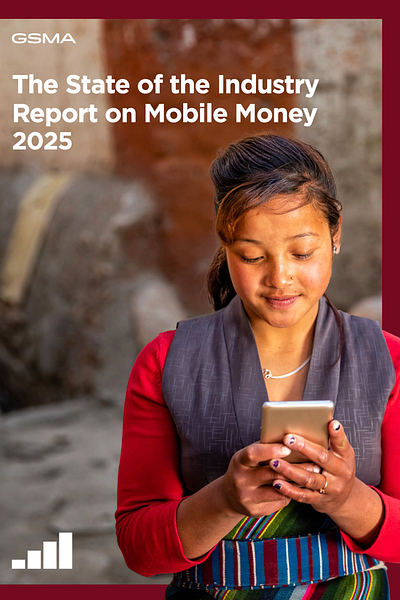Mobile Money: 2.1 Bn Global Users, And 14% YoY Growth!
Mobile money is bringing financial inclusion to roughly 1/4 of the World's population.
This is my daily post. I write daily but send my newsletter to your email only on Sundays. Go HERE to see my past newsletters
HAND-CURATED FOR YOU
Mobile money is huge and growing, bringing financial inclusion to 2.1 billion users, representing roughly 1/4 of the world’s population. If that doesn’t impress you, nothing will.
Traditionally, mobile money was defined as a system for sending and receiving money directly on a mobile phone, often without a bank account. In reality, mobile money operators are now getting increasingly sophisticated and grey the boundaries with mobile wallets, which may store card and bank details.
In fact, some mobile money providers, like Maya in the Philippines, have now received banking licenses, further blurring boundaries.
The most famous mobile money system is M-PESA, which still grows throughout Africa. While it faces competition, it has helped make Sub-Saharan Africa the epicenter of mobile money, accounting for over 1.1 billion registered accounts in 2024, twice the number in 2020.
The key to mobile money’s success in Sub-Saharan Africa is local mobile money agents. These agents, often convenience shops, can accept cash to add money to your account or transfer account balances to cash without needing a bank. These agents build trust and make digital money real.
Interestingly, mobile money is also growing in East Asia (Cambodia, Philippines, and Vietnam), with 20% of new accounts registered in 2024, and in the Pacific (Fiji), with 15%.
Mobile money is now doing far more than once envisioned. It now comes with an ecosystem of banks, credit, BNPL, and insurance. A mobile money journey may start with your local agent, but it can now lead to full inclusion.
Inclusion through mobile money is such a success story that it even increases GDP!
👉Mobile Money 2024 (My Greatest Hits)
🔹 It took the industry around 18 years to reach one billion registered accounts and an additional five years to double in size.
🔹 Accounts active on a monthly basis grew by 11% to reach 514 million in 2024. For both indicators, the bulk of the growth was driven by adoption and use in East and West Africa.
🔹 By the end of 2023, the total GDP of countries with a mobile money service was more than $720 billion higher than otherwise. This is equivalent to mobile money increasing GDP by 1.7% by 2023.
🔹 Mobile money's contribution to Sub-Saharan Africa's GDP rose from about $150-billion in 2022 to $190 billion in 2023.
🔹 Growth in Sub-Saharan Africa has contributed to the increased reach of mobile money agent networks worldwide. In 2024, there were 28 million registered mobile money agents - 20% more than in 2023.
🔹 B2M transfers are now more widely used to fund mobile money accounts. Bank-to-mobile (B2M) transfers were the highest in 2024 at $127 billion - 24% more than in 2023.
🔹 In 2024, East Asia and the Pacific had the second fastest growth rate for active monthly accounts behind the Middle East. It is one of the few regions where active 30-day accounts grew faster than registered accounts. Enabling regulation in markets such as Cambodia, Fiji, the Philippines and Vietnam has supported the growth of digital payments.
🔹 While mobile money serves as an entry point to other services, low digital financial literacy is often a barrier. As a result, around 60% of survey respondents have launched a digital financial literacy policy to increase digital skills and therefore mobile money use over time.






